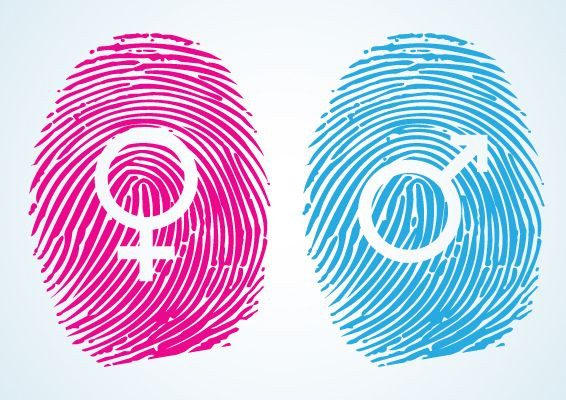Challenging Gender Identity: Biologists Say Gender Expands Across A Spectrum, Rather Than Simply Boy And Girl

The sex designation of your brain and body may not be as black and white as scientists have believed it to be. Instead gender may fall somewhere on a gray scale. Scientists are trying to unravel the complex biological breakdowns of gender, and as they learn more, it’s becoming more apparent there aren’t just men and women among us. In a comprehensive breakdown published in the journal Nature, geneticists weigh in on the question of gender identity.
“The main problem with a strong dichotomy is that there are intermediate cases that push the limits and ask us to figure out exactly where the dividing line is between males and females,” biology sex expert Arthur Arnold at the University of California, Los Angeles, told Nature. “And that's often a very difficult problem, because sex can be defined a number of ways.”
The scientists discovered the XX and XY cells that differentiate between genders can actually behave in different ways. When scientists took a closer look, they found not all people have cells that contain the same set of genes. Instead, it’s more like a mosaic of different unevenly divided sex cells, which biologists have taken to calling “mosaicism.” Although it’s a rare condition that only affects about 1 in 15,000 people, it still leaves an unidentified population of society outside of the familiar dichotomy.
These discoveries question the widely accepted and generally understood genders. The gonads, which are either the testicles or ovaries, are not the only gender markers. Doctors can no longer definitively look at the penis or vagina of a new baby and congratulate the birthing mother with a cheerful "it’s a boy" or "it’s a girl." Medicine’s ever-expanding understanding of the human body goes against everything we’re taught as children when it comes to our peers' private parts.
The plot thickens for babies born with ambiguous genitalia. These children grow to have intersex conditions known as the differences or disorders of sex development (DSD), and are more common than the mosaics of gender. It can lead to issues later on in their adult life, especially if their parents chose a gender for the baby before its brain is able to catch up with their decision. What if the baby's brain is of a male but his parents choose to remove the male genitalia, leaving him to grow up as a girl? Researchers say one baby out of every 100 born has some form of DSD, and with each new case comes a blurrier line of what we are as reproducing humans.
Because a human being cannot legally be labeled as anything but male or female in most countries, biologists believe it may be difficult to breach the matter. However, if societal acceptance can catch up with the science, sex on a spectrum may have a future in human history. Transgender and intersex advocates hope for a day when a person’s sex or gender are irrelevant in society’s parameters, albeit the skepticism of scientists such as Greenberg.
"This is potentially a critically important decision for children born with intersex traits," gender legal specialist Julie Greenberg, from the Thomas Jefferson School of Law in San Diego, Calif., told Nature. "I think to get rid of gender markers altogether or to allow a third, indeterminate marker, is going to be difficult."
Source: Ainsworth C. Sex redefined. Nature. 2015.



























